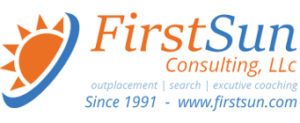There has been a lot of discussion around the impact technology and AI will have for the future of work, and yet, ever since Covid-19 swept the globe, the message about our future has become even clearer: what started as a few weeks of working from home has evolved into a catalyst for change regarding how we work and live.

At the end of the day, your career and business success remain in your hands. It’s up to you to adjust to the changes, not drown beneath them.
Over 16 million US workers have transitioned to working from home, a new category of careers has been born under the title “essential workers,” and the average American has now begun to stream online content for 8 hours or more each day.
It’s safe to say that the traditional definition of office life has been put to rest. But, now we are all left to wonder, what will replace it?
Before we go any further into the future, let’s get some context around the past we are so abruptly changing. Office spaces as we know them have really only existed since the 1930’s, with the birth of the cubicle occurring in the 1980’s. This style of work is not a long standing phenomenon, and before Covid-19, it was already on its way out of style. Employees were pushing for their freedom, with 80% of US workers reporting they would turn a job down if it didn’t offer flexible working arrangements. This lack of job flexibility has also impacted when families get started.
Women in the workforce are delaying having children, largely due to their jobs lack of flexibility and financial implications. In fact, a recent study by Modern Fertility and SoFi found that 3 out of 5 respondents delayed starting a family for the sake of reaching a certain career level they felt comfortable with. This employee demand pushed remote work to grow 44% since 2015. For this reason, Covid-19 has really only expedited what was already on the horizon.
As a career expert and coach, I have found myself questioning how permanent these changes are. Not to mention, how they will affect employees in the workplace, especially Millennials, whose careers already took a hit during the 2008 recession. In efforts to better understand tomorrow’s workforce, I reached out to Liz Wessler, the CEO and co-founder of WayUp, a job site and mobile app for recent graduates seeking employment.
One thing is certain: remote work is here to stay. This transition has already been set in motion with big tech companies like Facebook taking initiative now by telling staff to work remotely for the remainder of the year, and in some instances, permanently. Google has begun to rotate employees on site for a few days each week while ensuring facilities remain at only 10% occupancy. Twitter has taken a somewhat different approach, where virtually all employees will work from home, permanently.
Like this Article? Share It! You now can easily enjoy/follow/share Today our Award-Winning Articles/Blogs with Now Over 2.5 Million Growing Participates Worldwide in our various Social Media formats below:
LinkedIn: https://www.linkedin.com/in/chris-g-laughter-b46389198/
Facebook: http://www.facebook.com/pages/First-Sun-Consulting-LLC-Outplacement-Services/213542315355343?sk=wall
Twitter: Follow us @ firstsunllc
Best Daily Choice: Follow the Best of FSC Career Articles/Blogs @
https://twitter.com/search?q=bestoffscblog&src=typeahead_click
Question: Want the ‘the best/current articles/blogs on the web’ on Job Search, Resume, Advancing/Changing your Career, or simply Managing People?
Answer: Simply go to our FSC Career Blog below & Type(#Jobsearch, #Resume, or #Networking) in Blog Search: https://www.firstsun.com/fsc-career-blog/
What Skill Sets Do You have to be ‘Sharpened’ ?
Article continued …
While remote work offers a slew of improvements for the workplace, a 25% reduction in employee turnover and 77% of employees reporting increased productivity, to name a few, it also brings unique changes and demands that companies may not be fully aware of, yet.
Here are four probable shifts we’ll start seeing in the workplace as we eventually step into the post Covid-19 world.
1. Remote work could further the racial divide.
A survey conducted by WayUp found that only 10% of new college graduates believe it will be possible for them to find a remote job or internship. While this is a gloomy value for the previously bright eyed graduates, what makes the data even more alarming is factoring in participants’ demographic. Candidates who self-identified as Black/African American or Hispanic/Latino were an astonishing 145% more likely to feel concerned about finding a remote job compared to White or Asian candidates. This discrepancy may very well be due to the occupational segregation that unfortunately still exists within the U.S.. Moreover, the Bureau of Labor Statistics identified that only 19% of African American and 16% of Hispanics would be able to work from home based upon their job functions. Construction and services jobs, held primarily by Hispanic and African American workers have been some of the hardest hit industries due to Covid-19, and are the least capable to provide remote work.
Not only were Black/African American or Hispanic/Latino descent candidates more stressed about getting a job, but 48% of them felt under qualified. When asked why, many of these candidates expressed fear about not having access to high bandwidth internet and living in confined or distracting quarters. Data shows that Hispanic/Latino and Black/African American families have more family members (19% and 7%, respectively) per square foot compared to caucasian families. Suffice to say, the more people confined to a small living space, the more distractions you can expect to face, not to mention devices fighting for that strong internet connection. It’s no surprise that this demographic is more stressed about working from home.
In my conversation with Wessler, she shared a simple example of the impact remote operating has had on minority demographics. “When an interview candidate calls in from their closet, it comes across unprofessional. However, for some, this is the most quiet space in a house to be online for an interview.” It’s small impacts like this that may be what hold minority candidates back from landing a job.
The unfortunate reality is that first impressions really can make or break an interview. It is up to employers to prepare their cohort for how to vet out candidates, regardless of the talents living situation. Instead of hiring managers focusing on the candidates’ visual surroundings, the attention needs to shift towards their work ethic, qualifications and cultural fit within the company.
From here, employers must take it upon themselves to provide all employees with access to the necessary remote tools to perform their jobs. This could mean paying for employee Internet bills, providing home office supplies such as noise canceling headphones, or even providing standing desk equipment and cameras for virtual meetings. Take Tristan Brown, a minority business owner of TLBrown Law who employs minority employees as an example, who explained: “Many of my employees actually prefer to work from the office because they live in crowded and confided living spaces with poor internet quality. Though I could not give them bigger spaces, I offered to pay for their internet upgrades. I also made special accommodations and permitted some to occupy isolated offices in our building.”
Take the initiative to have conversations in an effort to understand how employees work best and what tools they may need to feel confident in producing quality work.
2. Determining promotions and merit increase will become data centric.
In the past, one of the main reasons employees received promotions was due to their tenure within the organization. In fact, one study found that 150,000 employees with low-performance scores from 75 companies received promotions in a single year. Suffice to say, there isn’t always a direct correlation between getting a promotion and stellar job performance.
With a drop in in-person connection, and an increase in online platform usage, the days of employees schmoozing their way to the top may be on the decline. The future of promotions looks to become more data centric, where the decision is based upon an array of qualitative metrics such as sales figures, year over year performance values, and customer service scores and reviews. We can also expect a rise in app and technology usage that evaluates employees’ digital experiences. These additions will provide employers with a more collaborative and data measured sense of the value you are able to add, despite being remote.
- Vevox: An anonymous polling app that allows employees to provide their honest feedback without the stress of being questioned further or receive backlash for being honest.
- PollEv: A mobile web interface and mobile app that allows you to present, manage, and respond to activities.
- Officevibe: A platform that sends automatic surveys and polls to gather specific insights from your team. You can use this technology to identify what employees are unhappy with and where opportunities to improve lie.
- Polly: For the organizations that largely communicate via Slack this is a great option for gathering employee data anonymously. This software is built to incorporate directly into Slack and gather the feedback and opinions you are searching for on an employee or corporate event.
With the influx in remote work, some managers have already begun to analyze productivity through tracking employee keystrokes or remotely monitoring screens via programs such as TeamViewer. The number of minutes idle on a computer or the amount of keystrokes taken could be used as a baseline to dictate engagement and effort. Come merit season, metrics and tracking systems such as these may very well become indicators of where employees performance falls amongst their team. Here are a few programs to consider:
- Time Doctor: A source used by companies such as Apple and Verizon that enables managers to track the time employees spend on certain tasks or the sites they visit throughout the workday.
- Toggl: A virtual software to track remote employees’ work with features and plans suited for both smaller businesses and entrepreneurs. It’s effective for simple task management and time tracking while also offering keyboard tracking and time spent on various online tools. This app also provides reports to help analyze employee productivity and how they spend their time.
- Evenhour: Web-based software that enables remote employee tracking. This is geared towards monitoring what is on each employee’s plate to facilitate good team management and is not intended to be a distraction management software.
Whether this level of monitoring is beneficial or not, remote workers can rest assured that they still have a high chance of getting a raise. In recent years, 57% of females and 51% of males working remotely are still getting raises. This increase in promotions for remote workers may be due to the fact that productivity and workplace satisfaction are higher for employees who have flexible work environments. Not only that but, remote female staff received the largest merit increases over any other group. A larger transition to remote employment may be the very solution to lessen the gender pay gap.
3. Cyber security measures will become even more necessary.
As companies provide more employees with remote work computers and access to email on personal mobile devices the need to build heightened cyber security will become mandatory. While security breaches have risen 11% since 2018 and 67% since 2014, we can only expect this rise to continue, given that remote work widens an organization’s attack surface.
Here’s the harsh reality: a laptop is stolen every 53 seconds and 93% of successful data breaches occur in less than one minute. This theft can take place anywhere from someone’s car, to public transportation or at a local cafe, and employees must take on a sense of responsibility to help protect the security of their employer.
This risk has become so high that the International Associate of IT Asset Managers (IAITAM), a vendor neutral IT organization, expressed heightened warnings to government agencies and businesses around the risks involved with allowing employees to work from home without secure devices. A previous report found that 17% of U.S Securities and Exchange Commission laptops were being used in unauthorized locations. Needless to say, the more employees a company and agency lets work from home, the larger the breeding ground for security breaches.
A data breach can lead to significant revenue loss, upwards or 20%, along with a potentially damaged brand reputation, and loss of proprietary information. If you think you’re safe because you are a small company, I would advise you to reconsider, since small businesses account for 60% of hacks reported.
I spoke with Michael Miller, CEO of VPN Online, a quickly-growing media company in the cyber-security space, who has experienced lots of data breach as an IT in charge of security. “One of the most devastating breaches I heard about involved an attack on the owner’s email. Once the thief had access, they were able to read all his emails. Eventually, they were able to commit wire fraud by impersonating the owner and convincing the bookkeeper to wire money from the company’s account. It took them just seven days to clean out all the money in the company’s bank account. Needless to say, the company soon closed.”
In order to combat this devastating loss from happening to you, here are a few things Miller recommends doing now:
- Update software and firmware of your antivirus, operating system and hardware with modems and routers.
- Have a security measure in place for monitoring at user, application, system, network and database level
- Have an active monitoring system in place.
Take conscious precautions now to protect yourself. Start off by implementing two-factor authentication (Businesses can choose from a variety of two-factor authentication providers, including OneLogin, Yubico, or Okta), monitoring access controls (here’s an option) and building stronger passwords for all accounts (here’s how). Ensure no employee is using public Wi-Fi, and, if needed, be willing to support their phone bills to host a hotspot. Emails that hold sensitive information must be encrypted along with all devices that store sensitive data to protect the company information in the event of theft.
A security breach occurs in a momentary flash, but often takes weeks to identify, at which point the damage has usually already been done. It is in a corporation’s best interest to train staff on security awareness with not only understanding the hardware for protection but also how to protect their physical surroundings. Screen protectors, locking devices and simply building habits to never leave a computer unattended in public must become business norms for those that work remotely. Here are a few trainings you can consider sharing with your organization:
- Alison Digital Security Awareness: Learn how to be more security conscious in the evolving remote workplace.
- Coursera Cybersecurity Awareness and Innovation: Cybersecurity awareness mainly focused on identity management and understanding effective protection mechanisms against common threats related with Identity
- Ninjio: Cyber security awareness training that uses micro-learning storytelling to educate and empower employees to become defenders of their devices.
4. Methods of feedback will drastically change.
When offices were swarming with staff, managers could quickly stop by an employees desk and thank them for their hard work on a recent project, or offer gratitude for their input during the morning meeting. Covid-19 has torn down these familiar ways frequent feedback was provided, pushing management to use alternative means of providing consistent feedback.
This may not seem like a big concern, but when you take into account that Millennials, (born 1980 – 2000) who make up over half of the workforce, carry a deeply rooted need for consistent feedback…managers are in for some abrupt recalibration on how they provide feedback to keep their employees happy. The more time remote employees spend out of sight, the more they worry about also being “out of mind”.
Although putting an emphasis on qualitative data will drive promotions forward, employees need to maintain a level of personal connection. While relying on instant messaging and email is quick and consistent, managers should establish weekly or monthly, or even bi-weekly video (face-to-face) meetings to review projects and ensure employees are receiving the support they deeply crave, and need, to continue growing. Use this time to not only offer performance feedback and support at work but to build a personal connection and relationship. Employees leave bosses, not jobs, so take the time to make your connections genuine and authentic. While it may feel like an employers market right now, losing employees has major costs to a business (50-75% of an employees annual salary) that likely isn’t something you want to deal with.
Prior to the Covid-19 pandemic outbreak, data confirmed loneliness was at an all time high. With more staff working at home, this epidemic may only grow. Managers have an opportunity to bridge this gap of isolation while building relationships to provide supportive feedback. Keep communication consistent and personal amongst your teams and in one-on-one virtual settings.
If you are a business leader, what can you do to prepare for the future?
- Consider leveraging new apps and virtual technology to gather employee feedback such as PollEv, OfficeVibe, Vevox and Polly.
- Do a deep dive on companies that have already been managing remote employees successfully. Every year, FlexJobs released their top 100 remote companies list which is packed with great examples of businesses that operate well with remote staff. One great example is Dell, who implemented flexible work options back in 2009 and has been reviewed on Glassdoor as a top company to work for from home. Not only are their employees happy, but with 25% of their staff working remote, they have been able to save $12 million annually on real estate alone.
- Revisit your healthcare plans. Get curious and question how your healthcare options can improve to better support the wellbeing of your employees during pandemics such as Covid-19. Evaluate where wellness stands within your organization’s culture and how you can better prioritize not only physical health, but also mental wellbeing.
- Schedule ongoing one-on-one virtual check in meetings with employees to ensure that they feel heard and supported.
- Consider how to adjust your training and on-boarding process based upon a more remote staff operation:
- Cyber security training such as those offered on Alison or Coursera. You may even want to build your own training unique to your business through an internal Learning Management System.
- Health and safety training: based upon adjustments in the office such as hand washing stations or social distancing barriers, build out training on the new procedures and processes that impact daily office life.
- Management training: with teams working remote the style of management will shift and the means of communication must adjust. Generate training to outline how to be communicative and supportive when the majority of interactions are now virtual.
- Pryor Learning: How To Manage Remote Employees is a virtual seminar that reviews how to mentor and manage staff from afar, how to assimilate teams to work together and how to handle off-site struggles and office politics.
- Coursera Virtual Teams: An online training on how to become an impactful leader working with virtual teams.
These changes are something that employers and employees alike must become familiar with and take precautions to prepare for. At the end of the day, your career and business success remain in your hands. It’s up to you to adjust to the changes, not drown beneath them.
Forbes.com | June 15, 2020 | Ashley Stah lContributor
Writing resumes that get you hired is great, but those resumes don’t guarantee you are a perfect fit for any given job.









